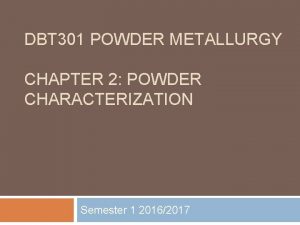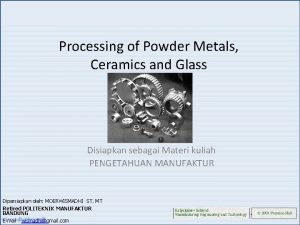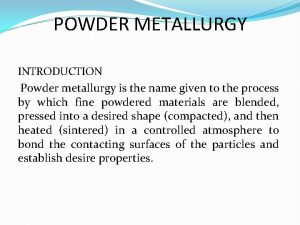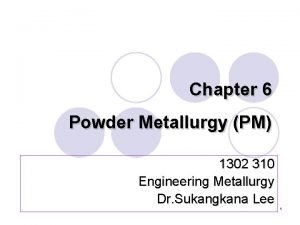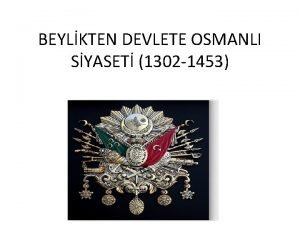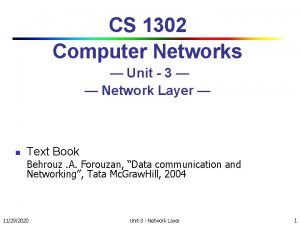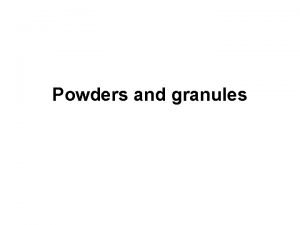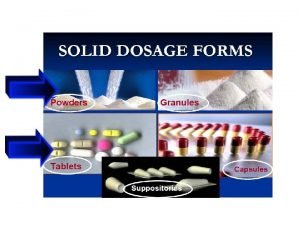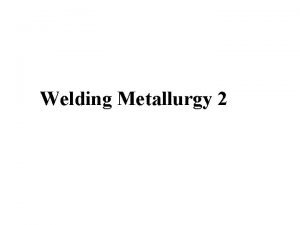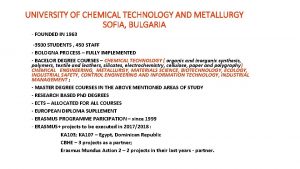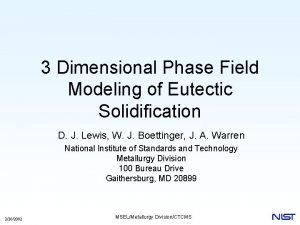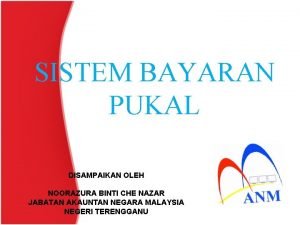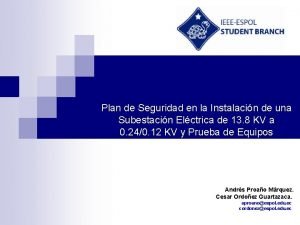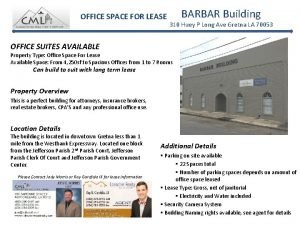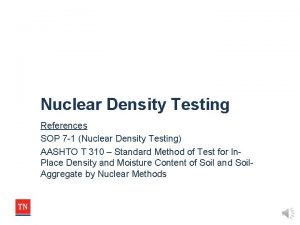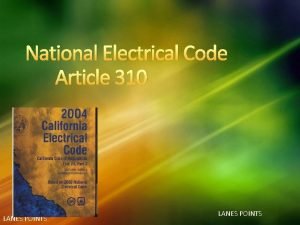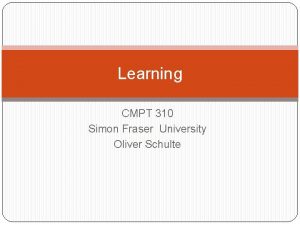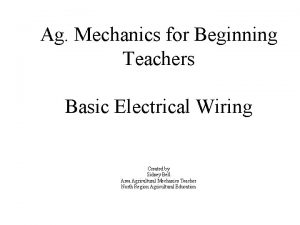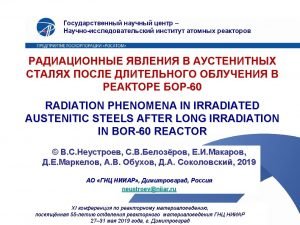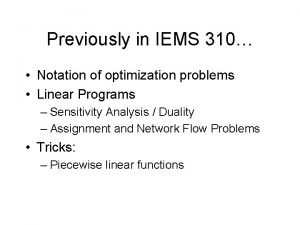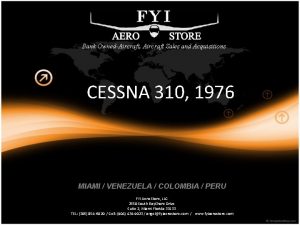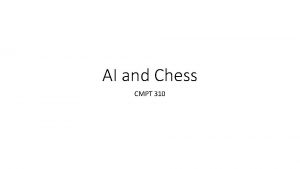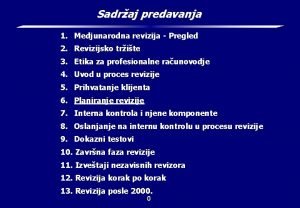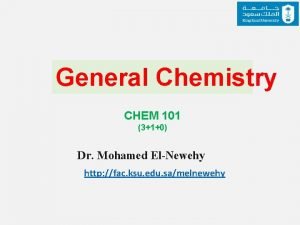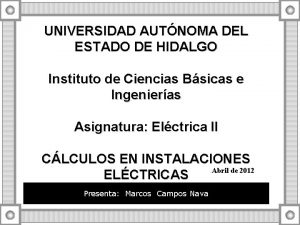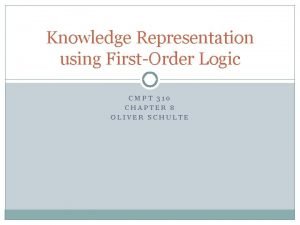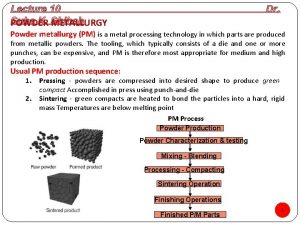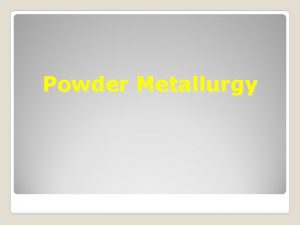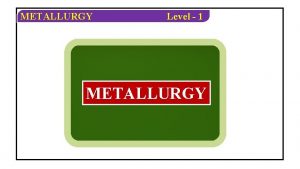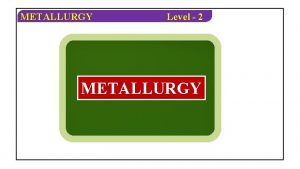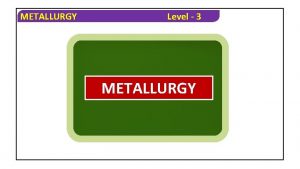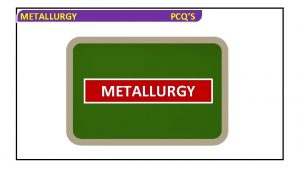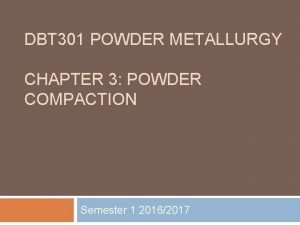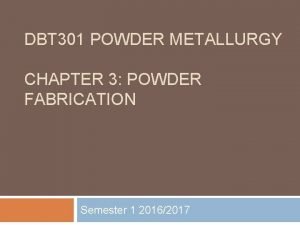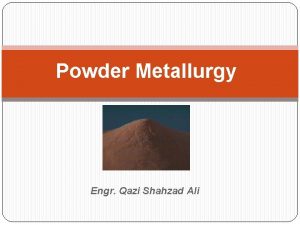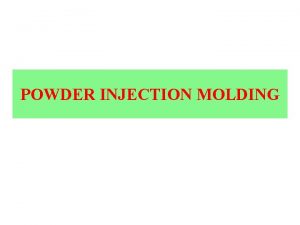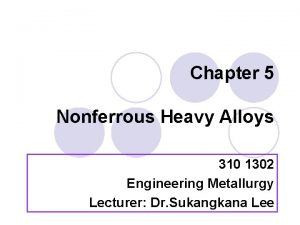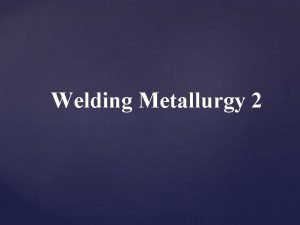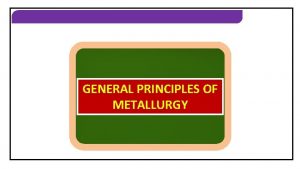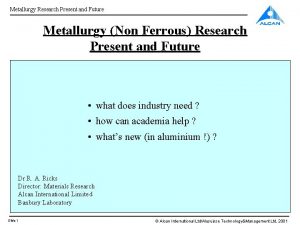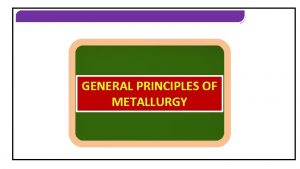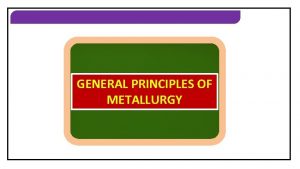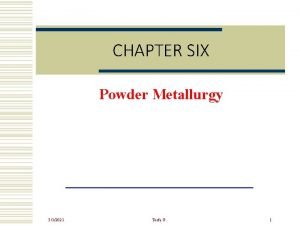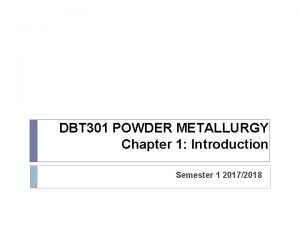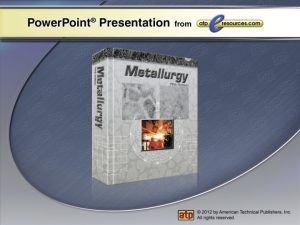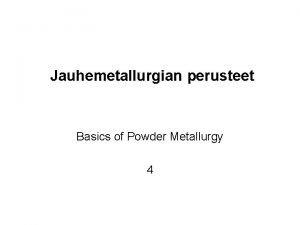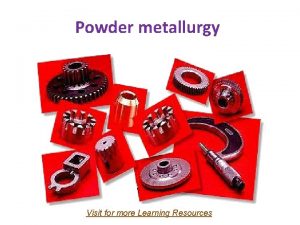Chapter 6 Powder Metallurgy PM 1302 310 Engineering






























- Slides: 30

Chapter 6 Powder Metallurgy (PM) 1302 310 Engineering Metallurgy Dr. Sukangkana Lee 1



คณสมบตทางกลของชนงานทขนรปดวยผงโลหะ ทมความหนาแนนตางกน เปรยบเทยบกบชนงานทไดจากการรด Material Tensile strength, MPa Tensile Elongation as Percent of in 50 mm as Percent of Wrought Iron (2 in) Wrought Iron Tensile Elongation Wrought Iron, Hot Rolled 331 100 % 30 % 100 % Powder Metal, 84 % density 214 65 % 2 % 6% Powder Metal, repressed, 95 % density 283 85 % 25 % 83 % 4

Benefits 1. PM parts can be fabricated to final or near-net shape, thereby eliminating or reducing scrap metal, machining and assembly operation 2. Lower overall cost (less scrap lost) 3. High melting point metals and composite materials can be produced 4. PM is useful in making parts that have complex shapes or difficult to machine 5. Permits a wide variety of alloy systems 6. Produces good surface finishes 5

Benefits (Cont. ) 7. Provides materials which may be heattreated for increased strength or increased wear resistance 8. Provides controlled porosity for selflubrication or filtration 9. Facilitates manufacture of complex or unique shapes which would be impractical or impossible with other metalworking processes 10. Is suited to moderate- to high-volume component production requirements 11. Offers long-term performance reliability in critical applications 12. Is cost-effective 6

Disadvantages 1. Porosity originates as the spaces between powder particles → low elongation 2. Expensive powder 7

Products and applications 8

9

10

Raw Materials Mixing Forming Sintering Optional Operations 11

Factors affected the QC of PM 1. Powder characteristic: Apparent density (AD), the irregularity and porous texture decreases AD 2. Powder preparation: most metal powder grains are coated by a thin oxide film but will be broken up during the pressing, stable oxide films e. g. Si. O 2 and Al 2 O 3 cannot reduced during sintering leads to abrasive and tool wear 3. Type of compacting press, tool and die 4. Type of sintering furnace, atmosphere, time and temperature 5. Heat treatment 12

. 5 Powder Manufacture PM Standards: Fine powder particles < 20 µm l The finer the better preferably 2 -10 µm Shape of Powders 1. Sponge-like for iron powder gives good green strength 2. Spheroidal particle gives high density and uniform distribution (see Fig. 2) l 13

14

Powder production: There are four main processes 1. Solid-state reduction 2. Atomization 3. Electrolysis 4. Chemical 15

1. Solid state reduction is the most widely used for production of iron powder. Process: 1. Selected ore is crushed and mixed with carbon 2. Continuous furnace → Sponge iron 3. Further crushing 4. Separation of non-metallic material 5. Sieving→ Irregular fine sponge-like powder 16

Milling 17

2. Atomization: air, nitrogen, argon (for oxidisable metal) and water are commonly used. The particle shape is controlled by rate of solidification of metal droplets. l Gas atomization gives spheroidal l Water atomized gives a more irregular shape. l Each powder produced by this method has the same chemical composition. 18

GAS ATOMIZATION Fine powder Collection chamber 19

20

3. Electrolysis By choosing suitable conditions, such as electrolyte composition and concentration, temperature, and current density, many metals can be deposited in a spongy or powdery state. l Further processing–washing, drying, reducing, annealing, and crushing–is often required, ultimately yielding high -purity and high-density powders. l 21

l Copper is the primary metal produced by electrolysis but iron, chromium, and magnesium powders are also produced this way. l Due to its associated high energy costs, electrolysis is generally limited to high-value powders such as highconductivity copper powders. 22

Electrolytic 23

4. Chemical process Use for production of a high purity, < 5 m. l The powders produced can have a great variation in properties and yet have closely controlled particle size and shape. l Oxide-reduced powders are often characterized as “spongy, ” due to pores present within individual particles. l 24

Solution-precipitated powders can provide narrow particle size distributions and high purity. l Thermal decomposition is most often used to process carbonyls. These powders, once milled annealed, exceed 99. 5 percent purity. l 25

Sponge iron-reduced ore 26

Isostatic compaction Vacuum melting and Cold forging Hot isostatic pressing Plus hot forging Direct hot isostatic pressing 27

Sinter-HIP l Sintered metals ~ 92% density is sufficient to ensure that open porosity at surface has been eliminated HIPed to full density. l This process start from sintering then high pressure argon is introduced or vacuum sinter followed by HIPing in a separate apparatus for hard metal cutting tools. 28

29

Metal injection Moulding (MIM) Powder + Binder Blending Granulation Injection Moulding Green body Debinding Sintering Finished part Brown body 99% Density 30
 Powder characterization in powder metallurgy
Powder characterization in powder metallurgy Powder metallurgy and metal ceramics
Powder metallurgy and metal ceramics Powder metallurgy
Powder metallurgy Hot isostatic pressing disadvantages
Hot isostatic pressing disadvantages Bafeon savaşı
Bafeon savaşı Head start performance standards 1302
Head start performance standards 1302 Cs 1302
Cs 1302 Define powders in pharmaceutics
Define powders in pharmaceutics Difference between powders and granules
Difference between powders and granules Example of divided powder
Example of divided powder Welding metallurgy definition
Welding metallurgy definition University of chemical technology and metallurgy
University of chemical technology and metallurgy Metallurgy 2
Metallurgy 2 Sistem bayaran pukal
Sistem bayaran pukal Tabla 310-16 nec
Tabla 310-16 nec 310 huey p long
310 huey p long Aashto t 310
Aashto t 310 310-16 table
310-16 table Cmpt 310
Cmpt 310 Nec 310 15 b 16
Nec 310 15 b 16 Marbled crested lizard
Marbled crested lizard 3-5/310
3-5/310 Iems 310
Iems 310 Bank repossessed aircraft
Bank repossessed aircraft Ai 310
Ai 310 Isa 310
Isa 310 Lesson 310
Lesson 310 Ece 310
Ece 310 101 310
101 310 Tabla 310-16
Tabla 310-16 Cmpt 310
Cmpt 310
